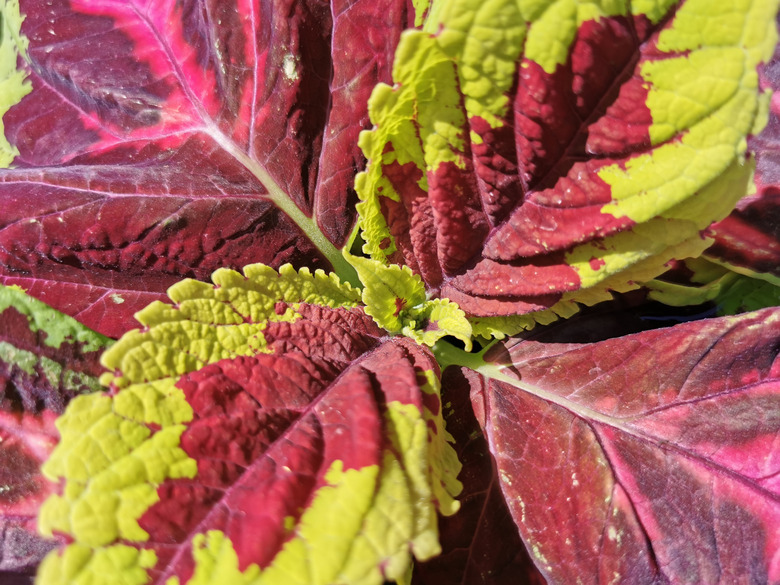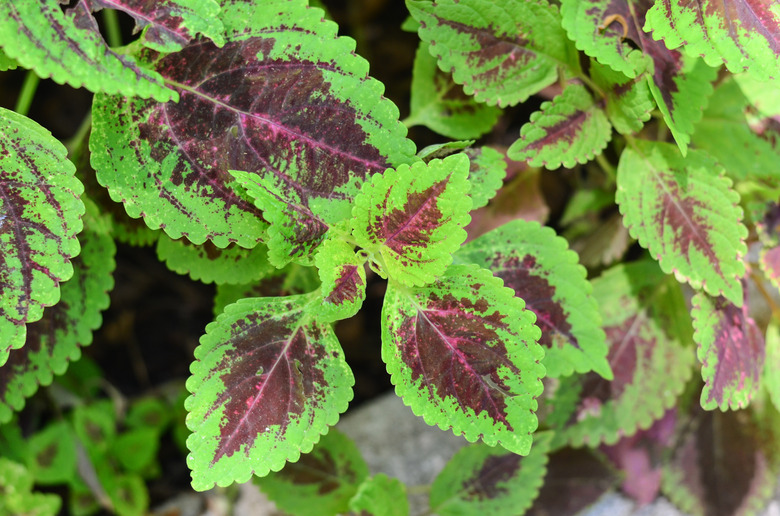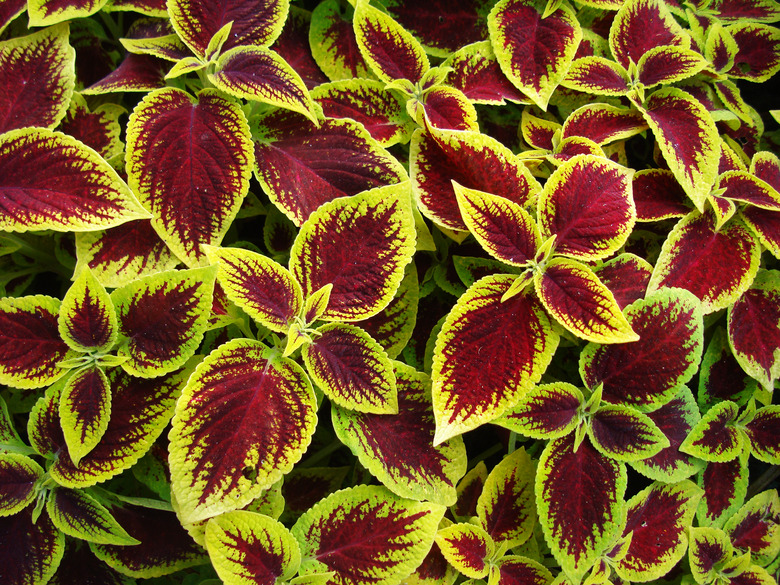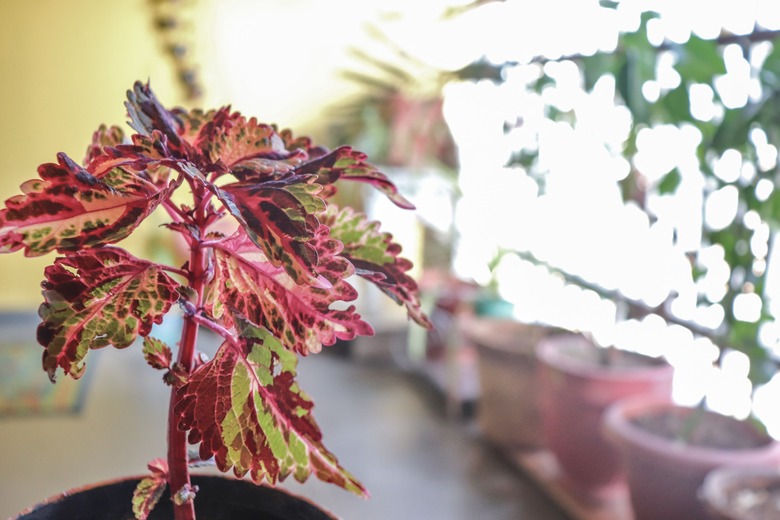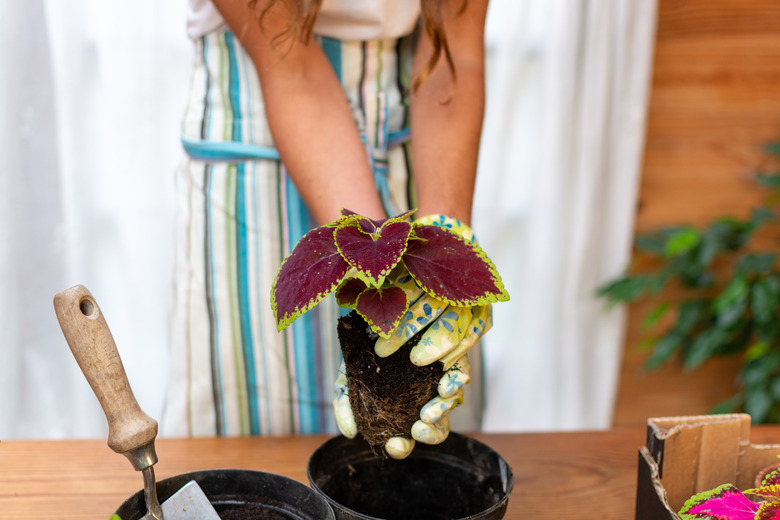How To Care For A Kong Rose Coleus
Showy, low-maintenance Kong™ Rose coleus (Coleus scutellarioides Kong™ Rose) adds brilliant color to home gardens and interiors with its brilliant multicolored foliage. This cultivar is often grown as an indoor plant, but it will also grow outdoors in USDA plant hardiness zones 10a to 11b.
As with most coleus plants, the Kong Rose coleus requires very little care or attention once established, but these plants must be grown under the right conditions to help them reach their full potential.
About Kong Rose Coleus Plants
Kong Rose coleus plants were developed as part of a trademarked plant series. They have gone by many scientific names, including Plectranthus scutellarioides and Solenostemon scutellarioides, but the most current and correct name classifies these plants as coleus, a group of annual or tender perennial plants grown for their foliage. These plants are often labeled as Coleus Kong Rose or Kong Rose coleus, using the scientific and series designation as a common name.
Kong coleus plants are noted for their especially large leaves. Many color combinations were developed within the Kong series, but the Kong Rose variety has brilliant lime green leaves with a rosy pink center.
Basic Kong Rose Coleus Care
Caring for the Kong Rose coleus starts at planting because the right growing conditions will help prevent most common problems. Also, these sensitive plants need the right growing conditions to create and maintain their brilliant foliage colors.
Sun Exposure
The right amount of sunlight is needed to produce bright, consistent coloring in Kong Rose coleus plants. This variety will tolerate part sun and full shade, but bright, indirect sunlight is needed for at least part of the day to enhance their coloring.
- In the garden, choose a growing location with full sun in the morning and shade during midday when the sun is strongest. Partial shade all day also works well, as long as the shade is bright during part of the day.
- When growing Kong Rose coleus indoors, position the pot within a few feet of an east- or west-facing window. A sheer curtain covering the window or dappled shade from outdoors is a good idea for west-facing windows in hotter climates.
Soil Requirements
Soil drainage and soil type both matter when growing Kong Rose coleus plants. They need organically rich, well-draining soil whether they are grown in the garden or in a pot.
- Amend the soil at their planting site with a 2- to 4-inch-thick layer of compost in the top 6 to 10 inches of soil. Adding in a high-nitrogen pelleted fertilizer before planting, such as 12-6-6, is also a good idea.
- Potted Kong Rose coleus plants need a 3-gallon pot with drainage holes in the base. Standard potting soil works fine for these plants, but you can also add in a few handfuls of compost or a sprinkle of slow-release houseplant fertilizer at potting.
Wind Shelter
Shelter from strong wind is also an important part of growing Kong Rose coleus plants. These plants have succulent stems and unusually large leaves, which can reach a length of 4 to 6 inches. Wind can easily catch the large leaves and break their delicate stems, so wind shelter is an important consideration when choosing where to grow these plants.
Ongoing Kong Rose Coleus Care
Kong Rose coleus plants need regular water, fertilizer and some light pruning or pinching to encourage lush, densely packed growth. These plants have very similar care requirements whether the plant is grown in the garden, in outdoor containers or as a houseplant.
Watering Needs
Good watering practices are essential when growing Kong Rose coleus. Moist soil will help keep the stems and leaves hydrated, but too much moisture can cause rot.
Plants growing under deep or partial shade need less frequent watering than those grown with more direct sun, so it is important to physically check the soil before watering rather than watering on a set schedule.
- Poke the soil around the base of the plant every few days to check the soil moisture level. Water only when the top inch of soil feels dry.
- Provide 1 inch of water each week for Kong Rose coleus grown in the garden with a little extra during times of high heat. A 2-inch layer of mulch will help keep the soil moist; just be sure that the mulch doesn't touch or rest against the base of the plant or the stems could rot.
- Potted Kong Rose coleus plants should only be watered when the surface of the soil is dry. Saturate the soil until water trickles from the base of the pot.
Feeding the Soil
All coleus plants are moderate feeders during the growing season, and Kong Rose is no exception. These fast growers benefit from monthly applications of dilute fertilizer from spring until the end of the growing season or from a single fertilizer application in midseason.
Monthly Feeding
Use 1/2 teaspoon of 15-15-15 fertilizer diluted in 1 gallon of water. Replace one watering each month with the fertilizer solution. Stop feeding at the end of the growing season.
Midseason Feeding
Apply balanced liquid fertilizer at half the recommended rate in mid-summer. Apply the solution to wet soil and avoid splashing it on the leaves and stems.
Pinching and Pruning
Pinching and pruning will encourage strong, healthy and lush foliage growth in Kong Rose coleus. Pruning can be done year round but is mostly needed during the growing season.
- Pinching back the tips of the stems every few weeks throughout the growing season will encourage bushy growth; just be sure to start when the plant is young. Pinch off the stem right where a pair of foliage branches off.
- Prune off the flower stalks as they form to redirect the plant's energy toward leaf production and away from making seeds.
- Prune off dead or damaged leaves whenever you notice them. Make the cut at the base of the leaf.
Tip
Although Kong Rose coleus plants rarely suffer from serious disease, it is a good idea to wipe down your pruning shears with disinfectant before pruning.
Overwintering Kong Rose Coleus Plants
One of the most important aspects of caring for Kong Rose coleus plants is learning how to overwinter them in cooler climates. There are two primary ways of overwintering coleus plants: moving the entire plant indoors or taking cuttings to propagate a new plant in spring.
Moving Kong Rose Coleus Plants Indoors
Moving a Kong Rose coleus plant indoors for the winter months is easy to do but can be labor intensive depending on the size of the plant. Potted plants can simply be moved to a bright and warm location indoors, but garden-grown Kong Rose coleus plants must be dug up and potted.
1. Dig up the entire plant and place it in a plastic pot that is large enough to hold the root system. Fill in around it with dirt and water it well. 2. Cut back all potted Kong Rose coleus plants by one-third so that the plant can focus its energy on producing new roots during the winter months. 3. Provide water whenever the soil feels dry. Raise humidity around the plant by placing it on a tray of pebbles covered in water. 4. Move the plant back outdoors in spring once daytime temperatures stay above 60°F.
Propagating Kong Rose Coleus
Another way of overwintering Kong Rose coleus plants is to take cuttings to propagate. It is a good overwintering method for growers with limited space indoors.
1. Gather several 3- to 5-inch-long cuttings with four to six leaves on each one. Cut the stem right below a pair of leaves. 2. Remove the lowest set of leaves to expose the growth nodes. Remove any buds and flowers to direct the cutting's energy toward root production. 3. Stick the cut end of the cutting into a small pot of moist potting soil. Press the soil against the stem. 4. Put a plastic bag over the pot to create a mini greenhouse. Set the pot in a warm, bright location. Remove the plastic bag three to four weeks later or once roots form. 5. Grow the Kong Rose coleus cutting indoors under warm, bright conditions with occasional watering until spring and then transplant it into a permanent pot or bed outdoors.
References
- North Carolina State Extension: Coleus scutellarioides
- University of Wisconsin Master Gardeners: National Garden Bureau's Annual of the Year 2015 – Coleus
- University of Illinois Urbana-Champaign: Save Money and Save Plants With a Garden of Overwintered Favorites
- Texas A&M AgriLife Extension: Kong Series Coleus (Solenostemon scutellarioides)
- National Gardening Association: Coleus (Coleus scutellarioides Kong™ Rose)
